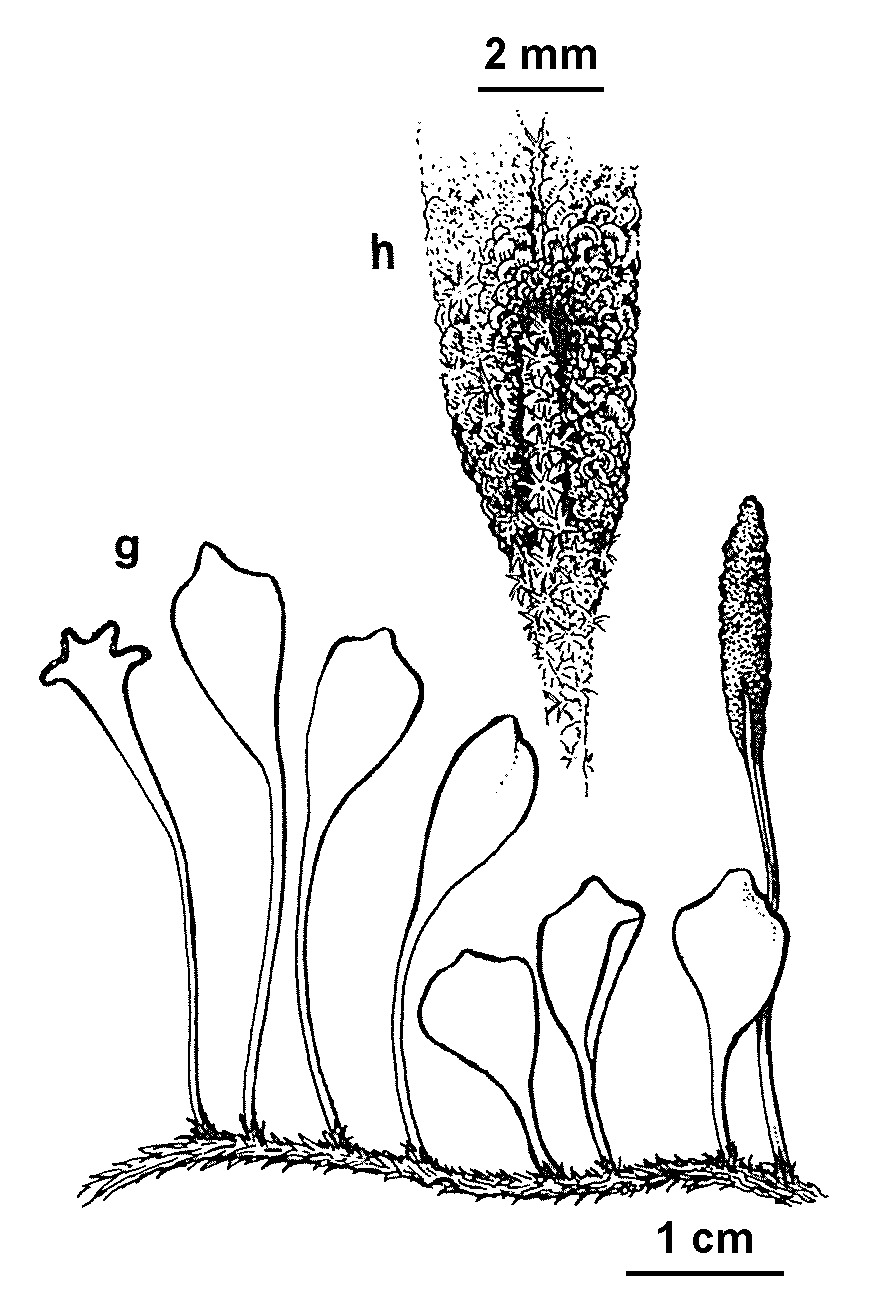Pyrrosia rupestris
(R.Br.) Ching Rock Felt-fernRhizome long and creeping, branched, wiry, densely scaly; scales pale brown, papery, bases broad (which darken and persist), apices long, pointed, erect. Fronds erect, 1–8 cm long; fertile fronds longer than sterile ones, linear to narrowly spathulate, and with longer stipes; sterile fronds round to broadly obovate; stipe hairy when young. Lamina thick and leathery, covered with stellate hairs when young; upper surface becoming glabrous with age, centre of hairs on lower surface darkening to give overall rusty appearance. Sori oval, crowded (sometimes confluent) on undersurface of narrower fronds.
GipP, CVU, EGL, EGU, WPro, HSF, MonT, HFE, VAlp. Qld, NSW. New Guinea. Mostly restricted to East Gippsland but with isolated occurrences in e.g. the Dandenong Ranges and Wilsons Promontory. Epiphytic on range of trees in wet forest, often in sunlit tree tops, but also on fallen logs and along horizontal and vertical fissures in rocks.
On exposed rocks, leaves are tougher and smaller, sometimes tinged with yellow. The thick coating of stellate hairs and specialized water-storage tissue enable this fern to survive severe drought. Fronds may curl up in dry conditions, but recover when moisture is added.
Entwisle, T.J. (1994). Ferns and allied plants (Psilophyta, Lycopodiophyta, Polypodiophyta). In: Walsh, N.G.; Entwisle, T.J., Flora of Victoria Vol. 2, Ferns and Allied Plants, Conifers and Monocotyledons, pp. 13–111. Inkata Press, Melbourne.
 Spinning
Spinning

